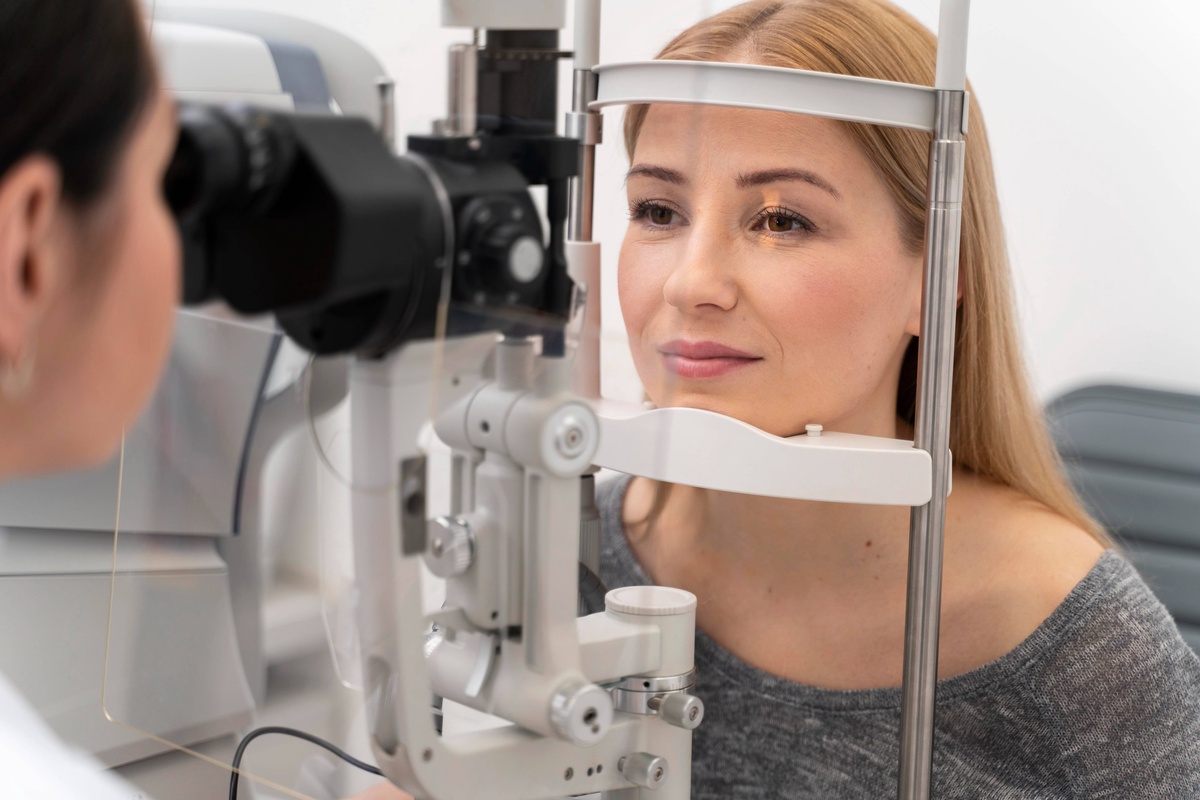What is the Retina and the Vitreous?
Every image we see comes through the lens of the eye and is absorbed by the retina, which converts the image into electrical signals and transmits them to the brain. Healthy retinas are essential for vision. The retina and vitreous are two evolutionary components of our eyes that we have to take care of.
The retina is the thin layer that lines the back of the eye and is sensitive to light. Millions of rods and cones, called photoreceptors, reside in the retina. The optic nerve attached to the retina sends signals to the brain every time an object is looked at. During a comprehensive eye exam, the doctor dilates the pupil to better see specific parts of the retina and diagnose any concerns or ailments.
Symptoms of retinal detachment
Retinal detachment does not cause pain. But before it progresses or develops, there are virtually always warning signals, such as:
- Sudden appearance of various floaters (small particles that appear to float across the field of vision)
- Sparks of light in one or both eyes (photopsia)
- Blurry vision
- Gradual reduction of side (peripheral) vision
- Shade similar to a curtain that falls over the visual field
Age-Related Macular Degeneration (AMD)
In people over 60, age-related macular degeneration (AMD) is the main factor causing vision loss. Destroys sharp, central vision. In these situations, early detection is critical.
With more than 60 years of age, it is highly recommended to have annual check-ups with dilation, especially if there are cases in family members or if you have risk factors such as smoking or not following a proper diet.
It happens when the macula, which is the retina's central region, degenerates. Loss of central vision results from this. You may be aware of the "dry" and "wet" forms of AMD.
Dry AMD is much more common and treatable compared to its much rarer wet form of AMD, which can cause rapid vision loss. Common symptoms of macular degeneration include a central vision blind spot or central vision distortion. Routine testing of your vision can detect the condition even before any symptoms are noticed.
From that age, it is advisable to follow a series of eating habits such as vegetable oils, nuts, whole grains, vegetables or fish.
Detached retina
A medical emergency requiring immediate attention is retinal detachment. Although a torn or detached retina frequently results from trauma, it can also happen on its own, especially in older men and women.
A detached retina separates from the structures that hold it in place, and surgery is needed to reattach it. Symptoms of a detached retina that is not caused by trauma include blurred vision or floaters, which may become increasingly pronounced.
The following factors raise the risk of retinal detachment:
- Age, retinal detachment is more common in people over 50 years of age
- Anterior retinal detachment in one eye
- Family history of retinal detachment
- extreme myopia
- Previous eye surgery, such as cataract removal,
- Previous serious eye injury
Diabetic retinopathy
As retina specialists, we choose the right treatment for your condition. There is a range of treatment possibilities, and we will discuss the options in depth with you.
Prevention of the retina and vitreous
Unfortunately, there is no way to prevent macular degeneration. Early detection and regularly scheduled appointments are extremely important, especially if there is a family history of macular degeneration.
There are specific tests that a doctor can perform to see the inside of the eye, retina and vitreous, through the pupil. Other tests include:
- Acuity test: a test to determine if there are defects in the centre of vision
- Amsler Grid Test: a test to detect blind spots, vision loss and distortion
- Optical coherence tomography (OCT): a test to take a closer look at the layers of the retina
The risk of diabetic retinopathy can be reduced by managing diabetes and controlling blood sugar levels. Diabetics have to follow a specific diet, medication, and exercise plan, as well as control blood pressure and cholesterol, and avoid smoking and alcohol. God Service Eye Clinic doctors recommend that diabetics schedule with regular eye exams to prevent any problems.
Procedure
Intravitreal injections
Injecting drugs into the eyes can effectively treat macular degeneration, diabetic retinopathy, and other eye ailments. Although it's natural to recoil at the thought of getting an injection in the eye, the procedure is far more comfortable than most patients expect.
In fact, numbing the eye with an anaesthetic before the procedure, which can feel like soap is in the eyes, is often the most uncomfortable part of the treatment. Most medications work by shrinking abnormal blood vessels or by reducing abnormal blood vessel leakage.
Laser surgery
Laser treatments can be used for various disorders of the retina. Although there is no cure for age-related macular degeneration, laser surgery can slow vision loss. Lasers can also treat diabetic retinopathy and retinal tears. These laser surgeries are performed on an outpatient basis, and patients generally experience little discomfort during the procedures.
Vitrectomy surgery
This is the primary surgery for the disease of the retina. A vitrectomy is performed to treat various disorders of the retina, such as removing scar tissue from patients with advanced diabetic eye disease.
It can also be performed to remove epiretinal membranes, close macular holes, and treat a detached retina. The surgery consists of removing the ice from the centre of the eye and replacing it with natural saline fluid.


No comments yet